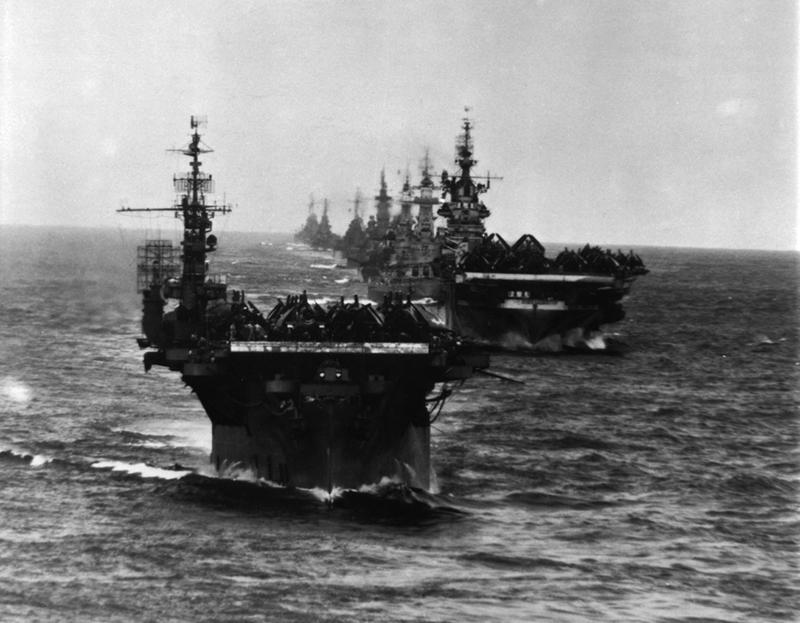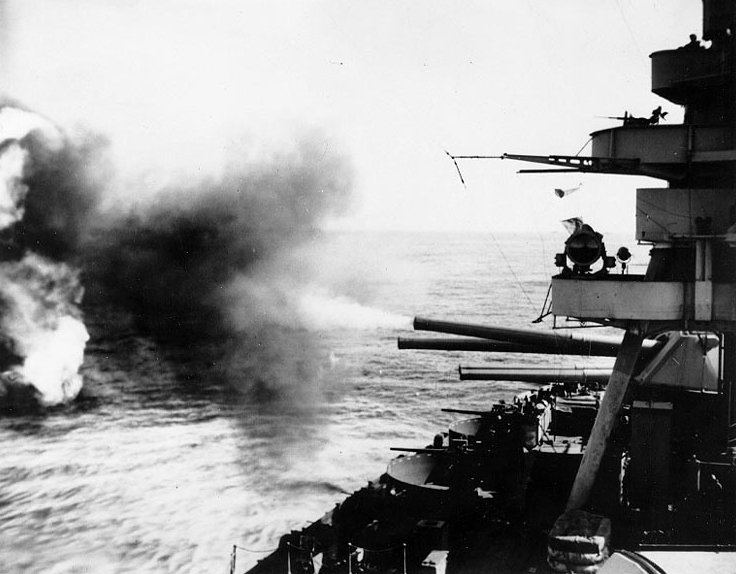Hello, and welcome back for the first in a series of dev diaries that will showcase the changes to the naval system beyond just building and designing new ships (aka the Kaiser Wilhelm Memorial Game Mode).
Today we will look at new mission types and changes to the naval interface. As we are still in development, you may see some stuff that is not strictly speaking finished (no matter how much Dan wants the hot pink coder art to go into the final build!)
As part of the rework, we have changed the Patrol as well as the Search & Destroy mission. While patrol still does mostly the same thing, Search and Destroy is gone and has been replaced with Strike Force. In the old system, the main difference between the missions was how many ships you had at the start of the battle.

Now that is gone, and the primary difference is that Patrol sends the ships out to, well, patrol, while Strike Force makes the ships sit in harbor until a patrol has found an enemy. This is particularly useful if you want your fuel-hungry battleships to remain in port and not use up your precious fuel until you know there is actually something out there to sink.
Finding the enemy is the main purpose of the Patrol order, so you’ll want your ships with good surface detection values to make up the bulk of your patrols - particularly destroyers and cruisers, ideally equipped with Radar and/or floatplanes. If there is an enemy in a zone you patrol, you’ll gain spotting on them, which essentially goes from “there is something out there” to “It’s the Bismarck and Prinz Eugen!” (at this point HMS Hood sorties to destroy them, in an easy and painless victory for the Royal Navy). Weather, terrain and the amount of ships committed all affect how fast you gain spotting. If you time it right, your big ships might be able to break out into the Atlantic before the enemy knows they are there. Depending on your engagement level and enemy strength, your patrol group might just decide to deal with the enemy directly, without even calling in the big guns.
.png)
As we mentioned before, your fleet is now made up from several task forces, each of which can have its own mission. Fleets are organized in Naval Theaters. While you can assign any number of sea zones to a fleet, a task force can only ever be in one place (with a few exceptions), so in order to cover all the zones, you should aim to have at least as many task forces as you have zones assigned. However, a single Strike Force can support several patrol task forces except that it can only support one combat at a time, so your poor little patrol force may find itself severely outgunned because your main force is off helping another patrol.

(Art is not quite completely totally absolutely final on this one)
Every fleet can be led by an Admiral, and can only control a certain number of task forces. Since every task force usually only covers a single zone, you’ll want to make sure you have different fleets covering different parts of the globe. Particularly as a raider you will also want to cover a larger area to force the enemy to spread out more.

You can customize your fleets and task forces with insignias and colors to keep track of them, much like with armies:

Convoy Raiding still works much as you are used to. However, we have changed the convoy raiding impact to be a weekly tick rather than a flat modifier, so sinking convoys will bit by bit reduce war support for the country that loses them. More info on this comes in a future dev diary dedicated to raiding and subs.
Convoy escort task forces can be assigned to cover several zones and will try to defend any convoy in them. If you are too spread out and subs catch the convoys, few if any escorts will be available to defend it.

Beyond that, we have added Invasion Support. A task force set to Invasion Support will defend transports in the area and remain off the beaches to provide naval gunfire support - ideal for your old battleships that just don’t cut it anymore against more modern opposition.

In addition, mine warfare is conducted by mine laying and mine sweeping missions (although mine sweepers also provide a passive bonus to moving through minefields so you might want to add them to your other task forces as well), and naval exercises give ships experience as well as provide Naval Experience to design new ships with - at the cost of fuel.
Newly built ships are automatically added to a Reserve Fleet, which exists on the theater level. Ships in that fleet reinforce other task forces in the same theater. You can set up Task Force templates that the game will try to create from the available ships in the reserves, and will try to keep up to strength as best it can. If you don’t want to reinforce a unit because, say, it is the US Asiatic Fleet and the Japanese have just declared war, you can disable automatic reinforcements for each individual task force.
If you don’t want to micro-manage your task forces to this degree, we have added an auto-balance function that splits your existing task forces into several, trying to maintain a strike force and one or more patrol task forces.
That is all for today. Next week we will focus on a different part of the naval rework. Don’t forget to tune in for the stream at 1600 hours CET, where we continue with Mexico for another week.
Today we will look at new mission types and changes to the naval interface. As we are still in development, you may see some stuff that is not strictly speaking finished (no matter how much Dan wants the hot pink coder art to go into the final build!)
As part of the rework, we have changed the Patrol as well as the Search & Destroy mission. While patrol still does mostly the same thing, Search and Destroy is gone and has been replaced with Strike Force. In the old system, the main difference between the missions was how many ships you had at the start of the battle.

Now that is gone, and the primary difference is that Patrol sends the ships out to, well, patrol, while Strike Force makes the ships sit in harbor until a patrol has found an enemy. This is particularly useful if you want your fuel-hungry battleships to remain in port and not use up your precious fuel until you know there is actually something out there to sink.
Finding the enemy is the main purpose of the Patrol order, so you’ll want your ships with good surface detection values to make up the bulk of your patrols - particularly destroyers and cruisers, ideally equipped with Radar and/or floatplanes. If there is an enemy in a zone you patrol, you’ll gain spotting on them, which essentially goes from “there is something out there” to “It’s the Bismarck and Prinz Eugen!” (at this point HMS Hood sorties to destroy them, in an easy and painless victory for the Royal Navy). Weather, terrain and the amount of ships committed all affect how fast you gain spotting. If you time it right, your big ships might be able to break out into the Atlantic before the enemy knows they are there. Depending on your engagement level and enemy strength, your patrol group might just decide to deal with the enemy directly, without even calling in the big guns.
.png)
As we mentioned before, your fleet is now made up from several task forces, each of which can have its own mission. Fleets are organized in Naval Theaters. While you can assign any number of sea zones to a fleet, a task force can only ever be in one place (with a few exceptions), so in order to cover all the zones, you should aim to have at least as many task forces as you have zones assigned. However, a single Strike Force can support several patrol task forces except that it can only support one combat at a time, so your poor little patrol force may find itself severely outgunned because your main force is off helping another patrol.
(Art is not quite completely totally absolutely final on this one)
Every fleet can be led by an Admiral, and can only control a certain number of task forces. Since every task force usually only covers a single zone, you’ll want to make sure you have different fleets covering different parts of the globe. Particularly as a raider you will also want to cover a larger area to force the enemy to spread out more.

You can customize your fleets and task forces with insignias and colors to keep track of them, much like with armies:

Convoy Raiding still works much as you are used to. However, we have changed the convoy raiding impact to be a weekly tick rather than a flat modifier, so sinking convoys will bit by bit reduce war support for the country that loses them. More info on this comes in a future dev diary dedicated to raiding and subs.
Convoy escort task forces can be assigned to cover several zones and will try to defend any convoy in them. If you are too spread out and subs catch the convoys, few if any escorts will be available to defend it.

Beyond that, we have added Invasion Support. A task force set to Invasion Support will defend transports in the area and remain off the beaches to provide naval gunfire support - ideal for your old battleships that just don’t cut it anymore against more modern opposition.

In addition, mine warfare is conducted by mine laying and mine sweeping missions (although mine sweepers also provide a passive bonus to moving through minefields so you might want to add them to your other task forces as well), and naval exercises give ships experience as well as provide Naval Experience to design new ships with - at the cost of fuel.
Newly built ships are automatically added to a Reserve Fleet, which exists on the theater level. Ships in that fleet reinforce other task forces in the same theater. You can set up Task Force templates that the game will try to create from the available ships in the reserves, and will try to keep up to strength as best it can. If you don’t want to reinforce a unit because, say, it is the US Asiatic Fleet and the Japanese have just declared war, you can disable automatic reinforcements for each individual task force.
If you don’t want to micro-manage your task forces to this degree, we have added an auto-balance function that splits your existing task forces into several, trying to maintain a strike force and one or more patrol task forces.
That is all for today. Next week we will focus on a different part of the naval rework. Don’t forget to tune in for the stream at 1600 hours CET, where we continue with Mexico for another week.
Rejected Titles:
It has been 0 days since someone made fun of the HMS Hood
Reserve your fleet today
Strike Forces are very usefuel
USA naval organize start: now 100% less ragequit
It has been 0 days since someone made fun of the HMS Hood
Reserve your fleet today
Strike Forces are very usefuel
USA naval organize start: now 100% less ragequit




